Before Mumbai:
Essays in Honour of Jim Masselos Prashant Kidambi (Editor)
Visit to download the full and correct content document: https://ebookmass.com/product/bombay-before-mumbai-essays-in-honour-of-jim-mas selos-prashant-kidambi-editor/
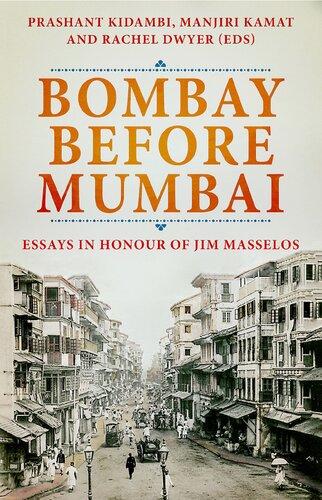
More products digital (pdf, epub, mobi) instant download maybe you interests ...
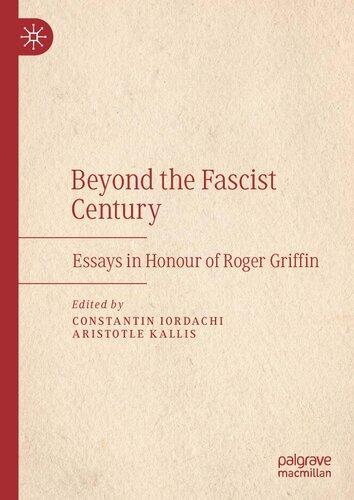
Beyond the Fascist Century: Essays in Honour of Roger Griffin Constantin Iordachi
https://ebookmass.com/product/beyond-the-fascist-century-essaysin-honour-of-roger-griffin-constantin-iordachi/
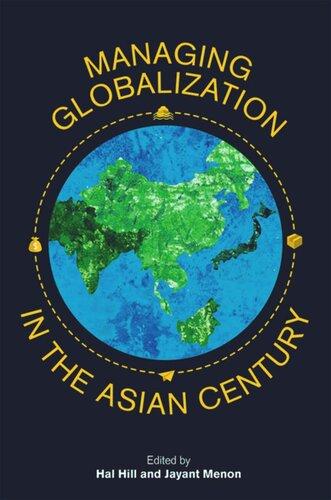
Managing Globalization in the Asian Century: Essays in Honour of Prema-Chandra Athukorala Hal Hill (Editor)
https://ebookmass.com/product/managing-globalization-in-theasian-century-essays-in-honour-of-prema-chandra-athukorala-halhill-editor/
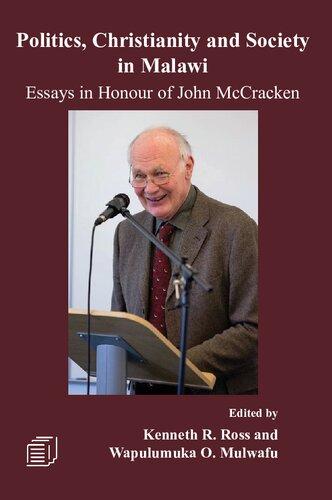
Politics, Christianity and Society in Malawi: Essays in Honour of John McCracken Kenneth R. Ross (Editor)
https://ebookmass.com/product/politics-christianity-and-societyin-malawi-essays-in-honour-of-john-mccracken-kenneth-r-rosseditor/
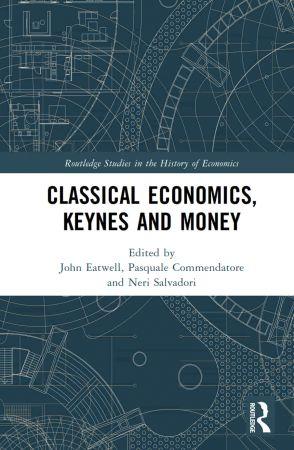
Classical Economics, Keynes and Money Essays in Honour of Carlo Panico John Eatwell
https://ebookmass.com/product/classical-economics-keynes-andmoney-essays-in-honour-of-carlo-panico-john-eatwell/

Challenging Preconceptions of the European Iron Age: Essays in Honour of Professor John Collis Wendy Morrison (Editor)
https://ebookmass.com/product/challenging-preconceptions-of-theeuropean-iron-age-essays-in-honour-of-professor-john-colliswendy-morrison-editor/
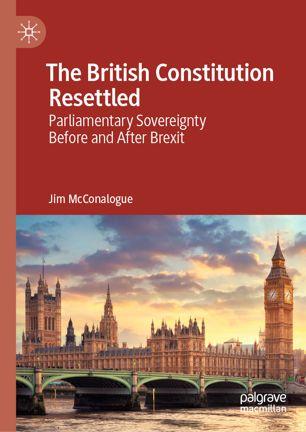
The British Constitution Resettled: Parliamentary Sovereignty Before and After Brexit 1st ed. Edition Jim Mcconalogue
https://ebookmass.com/product/the-british-constitution-resettledparliamentary-sovereignty-before-and-after-brexit-1st-ed-editionjim-mcconalogue/
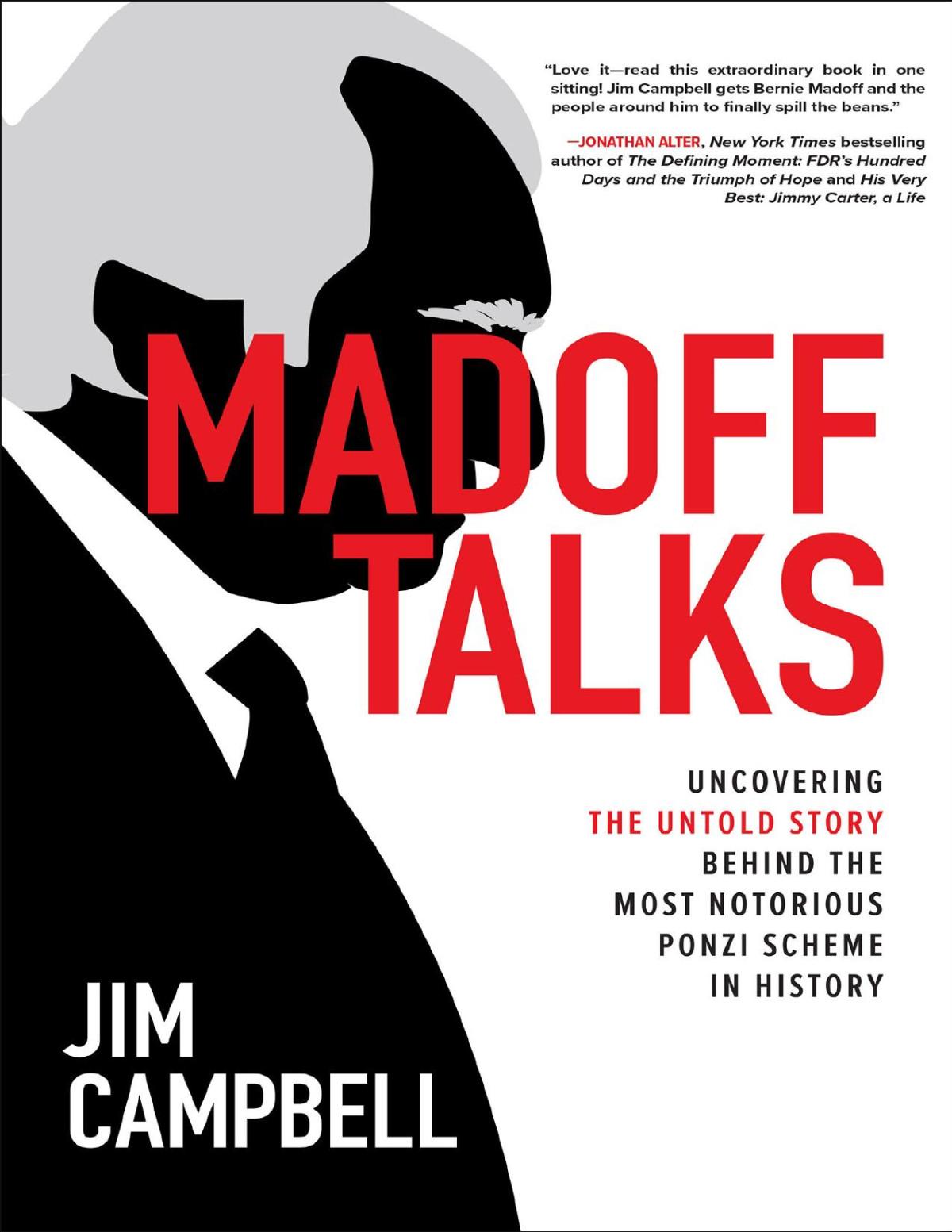
Madoff Talks Jim Campbell [Jim Campbell]
https://ebookmass.com/product/madoff-talks-jim-campbell-jimcampbell-2/

Madoff Talks Jim Campbell [Jim Campbell]
https://ebookmass.com/product/madoff-talks-jim-campbell-jimcampbell/

Emerging Applications of Carbon Nanotubes in Drug and Gene Delivery Prashant Kesharwani
https://ebookmass.com/product/emerging-applications-of-carbonnanotubes-in-drug-and-gene-delivery-prashant-kesharwani/
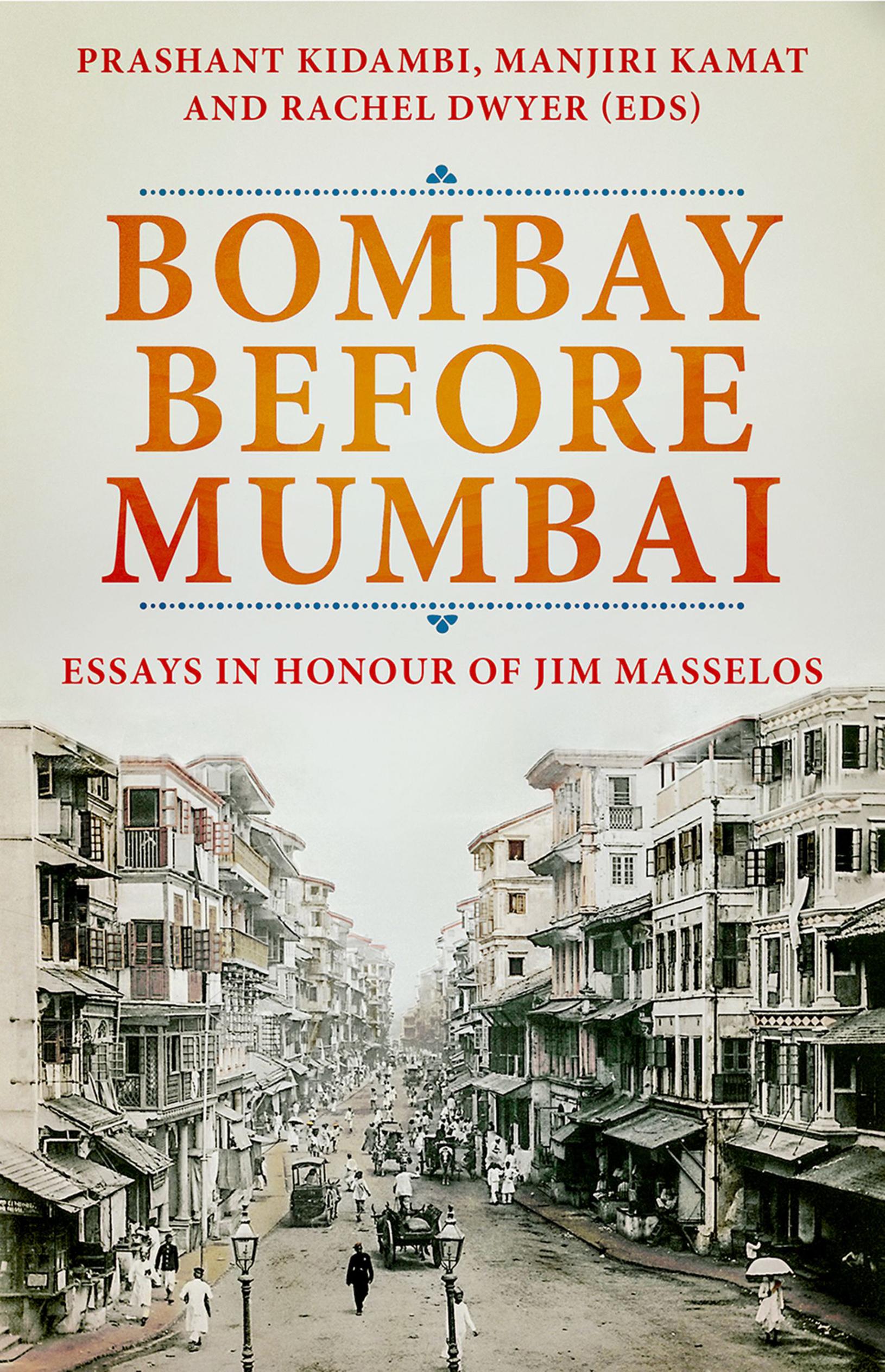
BOMBAY BEFORE MUMBAI
PRASHANT KIDAMBI
MANJIRI KAMAT RACHEL DWYER
( editors )
Bombay before Mumbai
Essays in Honour of Jim Masselos
3
Oxford University Press is a department of the University of Oxford. It furthers the University’s objective of excellence in research, scholarship, and education by publishing worldwide. Oxford is a registered trade mark of Oxford University Press in the UK and in certain other countries.
Published in the United States of America by Oxford University Press 198 Madison Avenue, New York, NY 10016, United States of America
© Prashant Kidambi, Manjiri Kamat, Rachel Dwyer and the Contributors, 2019
First published in the United Kingdom in 2019 by C. Hurst & Co. (Publishers) Ltd
All rights reserved. No part ofPublication may be reproduced, stored in a retrieval system, or transmitted, in any form or by any means, without the prior permission in writing of Oxford University Press, or as expressly permitted by law, by license, or under terms agreed with the appropriate reproduction rights organization. Inquiries concerning reproduction outside the scope of the above should be sent to the Rights Department, Oxford University Press, at the address above.
You must not circulate this work in any other form and you must impose this same condition on any acquirer
A copy of this book’s Cataloging-in-Publication Data is on file with the Library of Congress.
ISBN 9780190061708

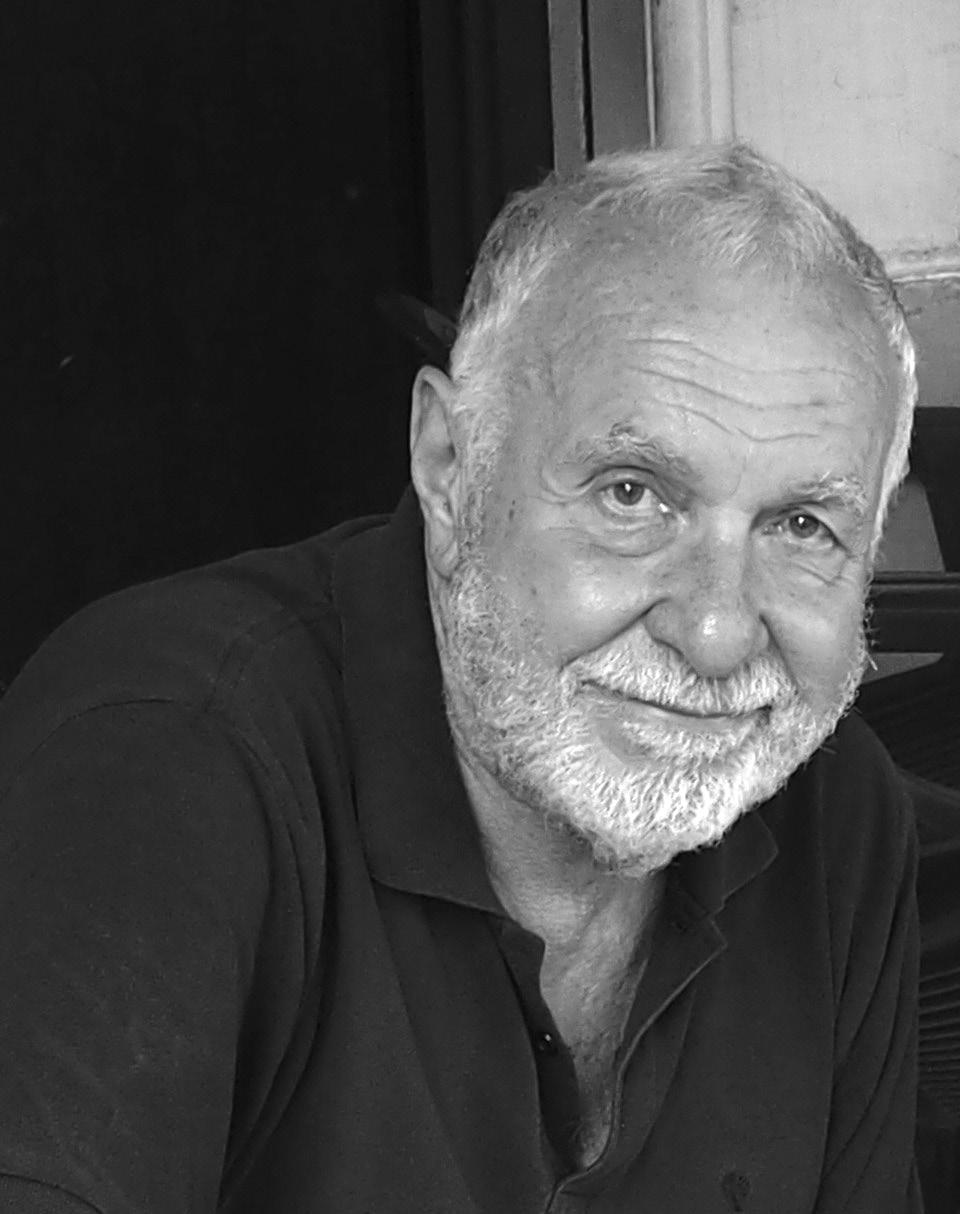
City of Gold, Urbs Prima in Indis, Maximum City: no Indian metropolis has captivated the public imagination quite like Mumbai. The past decade has seen an explosion of historical writings on the city that was once Bombay. This book, featuring new essays by its finest historians, presents a rich sample of Bombay’s palimpsestic pasts. It considers the making of urban communities and spaces, the workings of power and the nationalist makeover of the colonial city.
In addressing these themes, the contributors to the volume engage critically with the scholarship of a distinguished historian of this frenetic metropolis. For over five decades, Jim Masselos has brought to life with skill and empathy Bombay’s hidden histories. His books and essays have traversed an extraordinarily diverse range of subjects, from the doings of the city’s elites to the struggles of its most humble denizens. His pioneering research has opened up new perspectives and inspired those who have followed in his wake. Bombay before Mumbai is a fitting tribute to Masselos’s enduring contribution to South Asian urban history.
CONTENTS
Acknowledgments xiii
List of Illustrations xv
Note on Contributors xix
1. Introduction Prashant Kidambi 1
PART I
COMMUNITY
2. Mohammad Ali Rogay: Life and Times of a Bombay Country Trader Murali Ranganathan 15
3. Parsis and Bombay City: Community and Identity in the Nineteenth Century Jesse S. Palsetia 35
4. The Great Persian Famine of 1871, Parsi Refugees and the Making of Irani Identity in Bombay Simin Patel 57
5. Bombay’s European Community during the Interwar Period Douglas E. Haynes 77
PART II
SPATIAL TEMPLATES
6. Reading Social Spaces: The Life of the Bombay Theatre, 1770–1843 Erica Wald 99
7. Selling Home: Marketing Home Furnishings in Late Colonial Bombay Abigail McGowan 117
8. Social Geographies of Bombay’s Sex Trade, 1880–1920 Ashwini Tambe 147
PART III POWER
9. Worthy Objects of Charity: Government, Communities and Charitable Institutions in Colonial Bombay Preeti Chopra 171
10. Proletarian Bodies and Muslim Festivals: Disciplining Pleasure in Colonial Bombay Nile Green 195
11. ‘A Powerful Weapon for the Employers?’: Workers’ Housing and Social Control in Interwar Bombay Vanessa Caru 213
PART IV NATIONALISM
12. The Transnational Career of the ‘Indian Edison’: Shankar Abaji Bhisey and the Nationalist Promotion of Scientific Talent Dinyar Patel 239
13. Civil Disobedience and the City: Cong ress and the working classes in Bombay, c. 1930–32 Robert Rahman Raman 263
14. The Politics of Business: The Congress Ministry and the Muslim League in Bombay, 1937–39 Danish Khan 285
PART V AFTERWORD
15. Remembering Bombay: Present Memories, Past Histories Jim Masselos 305
ACKNOWLEDGMENTS
This book is the outcome of an international conference, entitled ‘Power, Public Culture and Identity: Toward New Histories of Mumbai’, held at the Alkesh Dinesh Mody Institute Auditorium, Kalina Campus of University of Mumbai on 6–7 January 2017. The conference was jointly organised by the Department of History, University of Mumbai, the University of Leicester and SOAS University of London. We are especially grateful to the University of Mumbai, and its ViceChancellor, for the generous financial and administrative support that made this event possible. It was a particular pleasure to honour Jim Masselos for his pioneering contribution to the study of Mumbai’s past.
The essays in this volume are an eloquent testimony to the enduring impact of Masselos’s scholarship. We are highly indebted to all the contributors for their commitment to the project since its inception. We would also like to thank Kishor Gaikwad, Shekhar Krishnan, Aneesh Pradhan, Nikhil Rao and Junaid Shaikh for presenting papers at the Mumbai conference. J.V. Naik, Mariam Dossal, M.D. David and Naresh Fernandes enriched the panel discussions with their vast knowledge of the city’s history.
We are grateful to the following faculty members of the Department of History, University of Mumbai, who took part in the conference: Sandesh Wagh, Neeta Khandpekar, Anagha Kamble, Prakash Masram, Grishma Rana, Laxmi Salve and G.S. Bachan. In other ways, too, the department was an exemplary host. In particular, we would like to thank Babasaheb Kambale, Mrunmayee Satam, Firdous Sarnobat, Jesstlin Thomas, Sachin Deshmukh and Kavita
ACKNOWLEDGMENTS
Mishra Pandey for their tireless work as members of the conference organising committee.
The Bombaywalla duo of Simin Patel and Sitanshu Shukla were wonderfully creative in designing and disseminating the posters for the event. Smeeta, Ramdas and Harsha Bhatkal generously hosted a dinner for the conference participants and made the occasion memorable with their warm hospitality. We would also like to record our appreciation of Mrs. Pheroza Godrej, whose quiet support eased our path at critical moments.
We have been very lucky, too, in our choice of publisher. Michael Dwyer’s enthusiasm and encouragement stiffened our resolve to proceed with the project. We have been able to count on his sage counsel throughout the production of this book. Rebecca Hirst’s close scrutiny of the manuscript has immeasurably improved the final product.
LIST OF ILLUSTRATIONS
1.1. Tombstone of Mohammad Ali Rogay in the Rogay family enclosure at the Bada Qabristan, Marine Lines, Bombay. Courtesy of the author. 33
7.1. Bombay, The Metropolis of the East (Bombay: Times of India Press, 1931), p. 62. Cour tesy of the University of Washington Library. 138
7.2. Ad for Evans Fraser & Co., Times of India Annual, 1921, n.p. Courtesy of the Southern Oregon University Library.
138
7.3. Advertisements in the Times of India. Left: 14 September 1936, p. 14. Right: 12 March 1934, p. 9. Image published with permission of ProQuest LLC. Further reproduction is prohibited without permission. 139
7.4. 1933 Bombay Catalog, Army and Navy Stores, pp. 25, 43, 101, 260. Used with permission from the House of Fraser Archives, University of Glasgow. 140
7.5. Evans, Fraser price list 1902, published as a multipage supplement in the Times of India, 13 September 1902, p. 17. Image published with permission of ProQuest LLC. Further reproduction is prohibited without permission.
7.6. Advertisement for Dewjee Canjee furniture makers, Times of India, 16 September 1935, p. 14. Image published with permission of ProQuest LLC. Further reproduction is prohibited without permission.
7.7. Advertisement, Times of India, 26 March 1934 p. 7.
141
141
Image published with permission of ProQuest LLC. Further reproduction is prohibited without permission. 142
7.8. Advertisement in the Times of India announcing Kamdar’s new showrooms. 18 April 1940, p. 16. Image published with permission of ProQuest LLC. Further reproduction is prohibited without permission. 142
7.9. The Social Service Quarterly 23, no. 2 (July 1937): n.p. Courtesy of the City College of New York Library. 143
7.10a, b. 1956 Godrej furniture catalog, “Quality Furniture for Home and Office”, pp. 5 and 11. Used with permission from the Godrej Archives, Mumbai 144
7.11. Bombay, The Metropolis of the East (Bombay: Times of India Press, 1931), p. 75. Courtesy of the Univer sity of Washington Library. 145
7.12. Gordhandas Goculdas Morarji, Bombay,The Gateway to India: An Exhaustive Tourist’s Guide (Bombay: Passengers’ and Traffic Relief Association, 1939), p. 14. Courtesy of the University of Washington Library.
145
7.13. Advertisement in the Times of India, 25 September 1934, p. 12. Image published with permission of ProQuest LLC. Further reproduction is prohibited without permission. 146
8.1. Map of the City of Bombay, from the Imperial Gazetteer of India, 1909. Creator: J.G. Bartholemew. Oxford: Clarendon Press, 1907–1909. Courtesy of the Digital South Asia Library, http://dsal.uchicago.edu 152
8.2. Map of the City of Bombay, 1924. Courtesy Ian Poyntz, International E&P adviser and creator of ‘Historical Maps of India’. 153
9.1. View of Hira Baug, the Seth Hirachand Gumanji Dharamshala Building, C. P. Tank Circle, Bombay, 1905. This dharamshala (rest house) was constructed for the use of the Jain community. Photograph by author, c. 1998. 190
9.2. View of cemetery for Baghdadi Jews built by Elias
David Sassoon in 1878, Chinchpokli. The two similar mausoleums house the remains of Sir Jacob Sassoon and his wife Lady Rachael Sassoon. The third prominent mausoleum houses the remains of Sir Albert Sassoon. Photograph by author, c. 1998. 190
9.3. Scott, McClelland & Company, David Sassoon Mechanics’ Institute and Library, Bombay, completed in 1870, view. Note the sculpture medallion of Sir David Sassoon set in the tympanum above the arch of the front façade of the entry porch. Even though no members of the Baghdadi Jewish Sassoon family currently reside in Bombay, they are not forgotten as the family name continues to be used in association with the many charitable and philanthropic institutions they founded. Photograph by author, c. 1998. 191
9.4. Frederick William Stevens, the Royal Alfred Sailors’ Home, Bombay, 1872–76, view. Photograph by author, c. 1998. 191
9.5. Fountain in front of the Cathedral of St. Thomas, Bombay, erected with the support of a contribution of Rs 7,000 by Sir Cowasji Jehangir Readymoney, c. 1860s. The Parsi community expressed its displeasure at their co-religionist’s support of a Christian institution by giving the fountain the nickname of ‘Cowasji’s Cross’. Photograph by author, c. 2006. 192
9.6. View of tenement building which houses some Goan clubs or cudds, Dhobi Talao, Bombay. Photograph by author, c. 1998. 193
9.7. J. J. Hospital compound, 1907, detail of section of plan of compound. Note the Parsi Ward and Parsi Kitchen in the top left-hand corner, and the Parsi Mortuary, a small structure behind the J. J. Hospital building on the lower right of the plan. Courtesy Maharashtra State Archives, Mumbai. 193
11.1. Antop Hill Scheme, Bombay, 1918. A. E. Mirams, Plans and Specifications of Houses Suitable for Occupation by the Working Classes, Bombay, Government Central Press, 1919. 221
NOTE ON CONTRIBUTORS
Vanessa Caru is CNRS Research Fellow at the French Institute of Pondicherry. She obtained her PhD in 2010 for a dissertation entitled ‘Working class housing and the social question, Bombay 1850–1950’. She is currently working on a social history of the Indian engineers of the Bombay Public Works Department during the colonial period.
Preeti Chopra is professor of architecture, urban history, and visual studies at the University of Wisconsin–Madison. She trained as an architect (CEPT, Ahmedabad), landscape architect, urban planner, and architectural historian (University of California, Berkeley) and has conducted research in western and southern India in the colonial and postcolonial contexts. Chopra is the author of A Joint Enterprise: Indian Elites and the Making of British Bombay. She is currently working on a second book on colonial Bombay. In addition to these projects, Chopra has published on a range of subjects, including the naming of city districts, French colonial urbanism in Pondicherry, the formation of suburbs in Bombay, and art and memory in the Indian city.
Rachel Dwyer is Professor of Indian Cultures and Cinema at SOAS, University of London. Her principal research interest is in Hindi cinema where she has researched and published on film magazines and popular fiction; consumerism and the new middle classes and the middlebrow; love and eroticism; visual culture; religion; emotions; Gandhi and the biopic; stars; and Hinglish and language in cinema. Her book on Yash Chopra, one of the great figures of the Hindu film industry, and with whom she has worked for several years, is in the British Film Institute’s
‘World Directors’ series’. She later wrote the BFI’s guide to ‘100 Bollywood films’. Dwyer’s most recent book is Bollywood’s India: Hindi cinema as a guide to modern India (published in India as Picture Abhi Baaki Hai). Her other research interests include the Asian elephant in India, and she has published papers on the elephant in cinema, literature and religion, as well as several reviews and non-academic features.
Nile Green is Professor of History and Ibn Khaldun Endowed Chair in World History at UCLA. A specialist on the Muslim communities of India, Pakistan, Afghanistan, Iran and the Indian Ocean, his research brings Islamic history into conversation with global history. He is the author of around 90 articles and sixteen monographs and edited books, including Bombay Islam: The Religious Economy of the West Indian Ocean (winner of the Middle East Studies Association’s Albert Hourani book award and the Association for Asian Studies’ Ananda K. Coomaraswamy book award) and Terrains of Exchange: Religious Economies of Global Islam A Guggenheim Fellow, he is currently writing Global Islam: A Very Short Introduction for Oxford University Press.
Douglas E. Haynes is Professor of History at Dartmouth College, and teaches a range of courses on the modern history of South Asia. His research focuses on the history of late nineteenth and early twentiethcentury western India, covering such topic areas as cities and urban politics; artisans and merchants; capitalism, consumption and advertising; and masculinity, conjugality and sexuality. His Small-Town Capitalism in Western India: Artisans, Merchants and the Making of the Informal Economy, 1870–1960 won the American Historical Association’s John F. Richards Prize for the most distinguished book published in English in 2012 on South Asian history. He previously wrote Rhetoric and Ritual in Colonial India, a study on the cultural accommodations of elites in Surat to colonial domination. His other works include Contesting Power, co-edited with Gyan Prakash, on “everyday resistance” in South Asian society and history; Towards a History of Consumption in South Asia (with Abigail McGowan, Tirthankar Roy and Haruka Yanagisawa) and a recent co-edited volume, The Global History of Sexual Science, 1880–1960. Professor Haynes is currently finishing a manuscript provisionally entitled Brand-Name Capitalism, Advertising, and the Making of Modern Conjugality in Western India, 1918–1940.
Manjiri Kamat is Professor of History at the University of Mumbai. Her field of specialisation is Modern Indian History and her research interests include urban history, the history of labour and the history of medicine. She holds an M.Phil. and Ph.D. degree in History from the University of Cambridge. Dr Kamat is the editor of Mumbai Past and Present: Historical Perspectives and Contemporary Challenges; Mumbai Kaal ani Aaj: Aitihasik Akalan ani Samakaleen Awhana; and co-editor of the Souvenir of the 73rd Session of the Indian History Congress. She was awarded the Professor B.B. Chaudhuri Prize at the Indian History Congress in 2006. Dr Kamat is a member of the Mumbai Heritage Conservation Committee of the Municipal Corporation of Greater Mumbai; Joint Secretary of the Cambridge Society, Bombay; External Associate at the Centre for Global Health Histories, University of York; and a Fellow of the Royal Asiatic Society of Great Britain and Ireland.
Danish Khan is a doctoral candidate at the University of Oxford, where he is researching the Muslim trading communities of western India. He is interested in the intersection between Muslim capitalism and Muslim nationalism in colonial Bombay. He has been a Martin Senior scholar at Worcester College; an Amersi Foundation scholar at Brasenose College, and is associated with the ‘Global History of Capitalism’ project. He obtained his MA at the India Institute, King’s College, London, and has reported extensively for UK and Indian print and television media.
Prashant Kidambi is associate professor of colonial urban history, University of Leicester. An historian of modern South Asia, his research explores the making of cities, colonial and postcolonial governance, the politics of class, and urban public culture. In addition to numerous journal articles and book chapters, he is the author of The Making of an Indian Metropolis: Colonial Governance and Public Culture in Bombay, 1890–1920 and Cricket Country: An Indian Odyssey in the Age of Empire Dr. Kidambi has previously been Director of the Centre for Urban History at Leicester.
Abigail McGowan is Associate Professor of History at the University of Vermont, USA, with a research focus on South Asian visual and material culture. Her first book, Crafting the Nation in Colonial India, explored the politics of crafts and craft development in colonial west-
ern India. She is the co-editor of Towards a History of Consumption in South Asia and the author of articles on Indian crafts, design, consumption, housing, retail, and domestic furnishings which have appeared in the Journal of the Society of Architectural Historians, Modern Asian Studies, Journal of Asian Studies, South Asia, Journal of Women’s History, Journal of Material Culture, and elsewhere. Her current research explores how changing ideas about domestic space in early twentieth-century India affected town planning, architecture, consumption, and family life.
Jesse S. Palsetia is Professor in the Department of History, the University of Guelph, Canada. He is a historian of India, and British imperialism, specialising in the history of Bombay city, and the Parsis of India. He is the author of The Parsis of India: Preservation of Identity in Bombay City and Jamsetjee Jejeebhoy of Bombay: Partnership and Public Culture in Empire.
Dinyar Patel is Assistant Professor of South Asian History at the University of South Carolina. He completed his Ph.D. at Harvard University in 2015, where he wrote a dissertation on Dadabhai Naoroji, which he is now revising into a book. Patel is co-editor (with S.R. Mehrotra) of Dadabhai Naoroji: Selected Private Papers and From Ghalib’s Dilli to Lutyens’ New Delhi: A Documentary Record (with Mushirul Hasan).
Simin Patel runs Bombaywalla Historical Works, a platform that creates awareness about Bombay’s built environment and social history. Bombaywalla operates a blog and conducts historical walks and curates public history projects for various organisations. Dr Patel completed her DPhil on the social history of the Parsis of colonial Bombay at Balliol College, University of Oxford, in 2015. She is currently working on a book on Bombay’s Irani cafes with photographer Hashim Badani for Roli Books.
Robert Rahman Raman is a doctoral candidate in South Asian History at the Centre for Modern Indian Studies (CeMIS), University of Goettingen. His research explores the long-term spatial and social transformation of the Muslim-dominated neighbourhoods in Mumbai’s mill districts and their impact on the political landscape of the metropolis. He holds an MPhil (by research) and M.A in Modern Indian History from the University of Delhi.
Murali Ranganathan researches the nineteenth century with a special focus on Bombay/Mumbai and western India. His areas of interest include the Bombay Country Trade, print history and culture, photography, newspapers and periodicals, public performance, and entertainment. His publications include Govind Narayan’s Mumbai: an urban biography from 1863, an extensively annotated translation of the iconic 1863 Marathi urban biography Mumbaiche Varnan. He has edited and introduced the Collected works of J V Naik: reform and renaissance in nineteenth century Maharashtra and J.R.B. Jeejeebhoy’s Bombay Vignettes: explorations in the history of Bombay.
Ashwini Tambe is Associate Professor of Women’s Studies at the University of Maryland-College Park and affiliate faculty in the History department and Asian American Studies program. Her interests include transnational feminist theory, modern South Asian history, and sexuality studies. Her previous books include Codes of Misconduct: Regulating Prostitution in Late Colonial Bombay and The Limits of Colonial Control in South Asia: Spaces of Disorder in the Indian Ocean (co-edited with Harald Fischer-Tiné). She is also the editorial director of Feminist Studies, the oldest US journal of feminist interdisciplinary scholarship. Her current work, supported by SSHRC and NEH grants, offers a transnational history of legal age standards for sexual consent in India.
Erica Wald is a Senior Lecturer in modern history at Goldsmiths, University of London. Her research focuses on the social history of the East India Company in the nineteenth century. She obtained her PhD at Trinity College, Cambridge in 2009, and is the author of Vice in the Barracks: Medicine, the Military and the Making of Colonial India. Her current project, The Spectrum of Social Life in Colonial India examines the idea of leisure and how this contributed to the everyday operation of empire.
INTRODUCTION
Prashant Kidambi*
In a seminal collection of essays published in 1978, the Cambridge historian Eric Stokes heralded the ‘return of the peasant’ in South Asian studies. He was particularly pleased to note that ‘among students of the colonial revolution in South Asia the city slickers were at last quitting town’.1 With the benefit of hindsight, one might justifiably regard the eminent historian’s celebration as premature. Recent years have seen a pronounced ‘urban turn’ in the study of modern South Asia.2 Indeed, of late, there has been a veritable flood of doctoral theses, journal articles and monographs on urban centres in the subcontinent. Significantly, Bombay has loomed large in this burgeoning historiography. Regarded as a ‘totem of modern India itself’, the city has attracted an ever-growing number of scholars.3 They have explored its evolution as the dynamo of Indian capitalism; the making and unmak-
* I am g rateful to Samira Sheikh and all the contributors to this volume for their comments and suggestions on an earlier version of this chapter.
ing of its myriad communities; the exercise of power at different levels; the political economy of its urban infrastructure; patterns of land use and the conflicts over ‘heritage’; the mutual imbrication of spaces and identities; and its contentious public culture, which has spawned the competing politics of nation, caste, class, religion and region.
Yet many of these themes were first addressed by one of Stokes’ younger contemporaries, who appears to have altogether ignored his pointed remarks on the future of South Asian history. For the better part of six decades, James Cosmas Masselos has written prolifically about Bombay, a city that has served both as his archive and his muse. In recognition of his pioneering contribution to the history of urban South Asia, the Department of History at the University of Mumbai, in association with the University of Leicester and SOAS University of London, hosted an international conference in January 2017. This volume comprises essays that were first presented on this occasion, as well as two specially commissioned contributions, by an international group of scholars whose own research has uncovered new aspects of Bombay’s palimpsestic pasts.
In the 1960s and 1970s, Australia emerged as a major hub for the study of South Asia. Historians were at the forefront of this Antipodean contribution to South Asian studies. At the Australian National University in Canberra, Anthony Low supervised a new generation of doctoral students in South Asian history that included, among others, Stephen Henningham, Andrew Major, Dipesh Chakrabarty, and Imran Ali. Other prominent historians of South Asia based in Australian universities included A.L. Basham, Hugh Owen, S.N. Arasaratnam, Ravinder Kumar, Richard Cashman, Peter Reeves, Ian Catanach, Michael Pearson and Marika Vicziany.
Jim Masselos was part of this constellation of scholars who played a leading role in establishing and promoting South Asian history in Australia. A graduate of the University of Sydney, he first came to Bombay in 1961 on a studentship funded by the Indian government under the Commonwealth Scholarship and Fellowship Plan. His research, supervised by Professor William Coelho at the Heras Institute of Indian History and Culture, St Xavier’s College, was submitted as a
doctoral thesis to the University of Bombay in 1964. The study presented a detailed account of the origins of nationalist associations in late nineteenth-century Bombay and Poona.4 A noteworthy feature of this work was its comparative approach and the close analysis of the urban context within which nationalist politics took root. Indeed, it still remains the most detailed and authoritative account of how nationalist associations emerged and evolved in colonial India.
At this time, Masselos shared with many of his peers a scholarly interest in the institutional origins of early Indian nationalism. But in the following years, his research heralded a new kind of urban social history. In a series of essays published in the late 1970s and early 1980s, Masselos explored how nineteenth-century Bombay was made from below by a range of social actors. These writings traversed a range of themes: the world of the urban mohalla, crowds and popular culture, and the changing rhythms of everyday life in the city.5 Masselos’s changing intellectual concerns were part of a global trend that saw social history emerge as the dominant framework through which historians tried to view the past.6 At the same time, he was deeply attentive to the specifically Indian constructions of the ‘social’ and the ways in which these were shaped by, and in turn helped fashion, urban spaces and identities. Importantly, too, Masselos’s interest in the realm of the social did not entirely displace his longstanding interest in local constructions of power. Thus, his essays on the Muslim neighbourhood in late nineteenth-century Bombay showed how the mohalla was ‘a field in which many kind of forces operated and with varying degrees of intensity’.7 This locale could be best grasped by ‘first of all concentrating upon the field in its own right and then of following such contacts as there were, not upwards so much as outwards’.8
By the 1980s, Masselos’s interests as a historian had shifted from the realm of the neighbourhood to the Gandhian Congress’ efforts towards popular mobilisation in interwar Bombay. His writings on this theme considered how the idea of the nation was forged through newly invented collective political rituals staged in urban spaces.9 In particular, Masselos underscored the ways in which, for the ordinary Indian residents of the city, dramatic episodes of mass protest on the streets gave a tangible identity to the nation. Importantly, too, he drew attention to the role of the urban crowd as a crystallisation of the city’s protean energies.
As Bombay’s modern identity seemed to dissolve with the rise of archaic visions of the social in the early 1990s, Masselos’s writings turned to other visions of the political that threatened to undercut its secular fabric. Thus, shortly after the 1992–93 riots in Mumbai, he published an essay that examined the first Hindu–Muslim riots in the city a century earlier and drew attention to the ways in which the urban communal riot was an ethnically territorialised phenomenon at the micro-level of the neighbourhood.10
‘Bombay was always an Indian city; even in the days of the Raj Bombay was never merely a white enclave surrounded by an Asiatic universe,’ Masselos observed in an essay published in 1992. 11 It was a view that stood in stark contrast to prevailing notions of the ‘colonial city’, which regarded it as a largely European construct in whose fashioning Indians had little or no role. In this, as in other respects, Masselos anticipated many of the arguments associated with the ‘urban turn’ in South Asia.
A noteworthy feature of Masselos’s historical writings on Bombay is his sharp awareness of the ambiguities, contradictions and tensions that structure the social worlds of the city. His essays draw on the empirical density of the archive to document how the messiness of everyday life in the city undercuts the formal conceptual categories of social scientists and theorists. Equally, he shows how no single concept or criterion could capture the reality of an urban entity as complex as Bombay. For instance, in an early essay on crowd behaviour in the city, he critiqued social science theories that sought to view the phenomenon in the developing world as a function of ‘traditional’ attributes and identities. Thus, he argued that ‘to see a society against the benchmark of ascribed criteria and even to relate it to overall cultural religious traditions, to place it entirely under such overarching conceptual umbrellas, is to do so at the cost of misunderstanding the range of group behaviour present in society’.12
But Masselos’s suspicion of overarching theoretical categories and concepts did not stem from a dogmatic empiricism. On the contrary, he consistently developed and deployed analytical frameworks that influenced scholars who followed in his wake. For instance, in his very
first monograph Masselos identified ‘encapsulation and integration’ as a key dynamic in Bombay’s history. ‘The city has many pockets and areas each with an identity of its own yet each is inter-related and integrated into the wider phenomenon that is Bombay,’ he observed. ‘The picture that emerges is not only of many groups co-existing within the broader fabric of the city’s life, but also of many kinds of groups based upon qualitatively different criteria.’13
In later essays, Masselos explored how Bombay has been historically shaped by the interplay between the formal ‘defined city’ and the informal ‘effective city’.14 Indeed, he contended, ‘the city defies the intentions of its masters to impose an orderly planned pattern upon it. The contrast between the habitation wishes of its population and the plans of those who formally control the shape of the city remains a constant tension in the structure of the relationships which create the urban complex.’15
The interaction between the formal and the informal, Masselos suggested, also gave rise to ‘two levels of identification, two ideas of the urban construct’. One construed the city as an overarching entity: ‘Bombay Town, Bombay city, the urbs prima in India and also Bombay the city of commerce, the city of gold’. The other derived ‘not from a defined exterior but from an experienced interior’.16 In this latter vision, the city was perceived as ‘a series of subsets, reflecting the life and living of individuals and groups within the overall urban construct’. As they moved about the city performing their daily routines, Bombay’s residents constructed the city as a series of familiar spatial milieus. This was ‘accustomed space’, which Masselos defined as ‘a perception of urban space derived through accustomed activity and accustomed time’.17
But there were times when accustomed space ‘might become a foreign universe’.18 In his essay on the first major Hindu–Muslim riots in the city, Masselos offered a memorable illustration of how habitual quotidian spaces could be swiftly transformed by a cataclysmic event.19 Early in the afternoon of 11 August 1893, a Hindu clerk named Bhasker Madhow Sett made his way home from the Bombay Court of Small Causes. He soon learnt that the outbreak of violence at the Jama Masjid had resulted in the closure of his usual route home to Nagdevi Street. Therefore, he ‘took a roundabout way, by tram to
